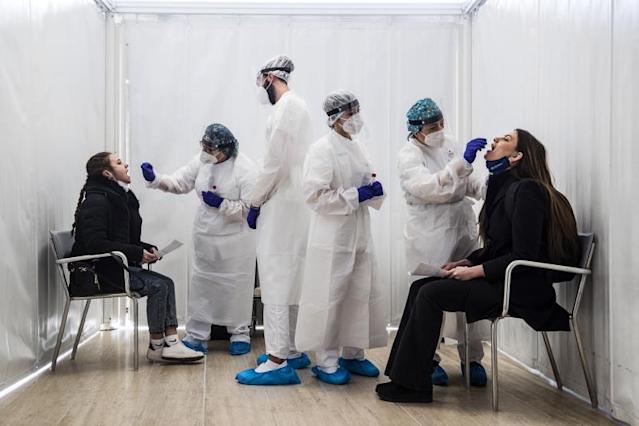RIO DE JANEIRO, BRAZIL – For the second consecutive month, Peru suffered its deadliest month of the entire covid-19 pandemic in April, bringing the total to 61,789 deaths with the coronavirus as the confirmed cause.
If March had already ended as the deadliest month with more than 5,267 confirmed deaths due to the disease, April registered almost twice as many with 9,458, according to government reports, which only count symptomatic cases with positive test for the virus that resulted in death.

It was precisely in April when the shortage of medical oxygen, whose demand tripled, and especially of beds in intensive care units (ICU) for the most serious cases, had the greatest impact.
In the northern region of Piura, the case of Hospital II of Talara, where a dozen people died after running out of oxygen, was a notorious one.
Together with the almost normal life in the streets except for the night curfew, these conditions meant that in April, Peru registered records for both new infections per day and deaths in a single day.
On April 15, 13,326 new infections were reported, the highest daily figure of the entire pandemic. Five days earlier, on the eve of the general elections, there were 384 deaths, also the highest figure so far since the beginning of the health emergency.
UNDERESTIMATED FIGURES
However, the official figures are far from reflecting the effects of the pandemic, as the government has already admitted that the number of deaths may be much higher than those reported so far.
This is shown by data from the National Death Information System (Sinadef) of the Ministry of Health, which has become the main reference tool to measure the evolution of the pandemic in Peru.
In this platform, which records both confirmed and suspected cases, April was also the deadliest month, with more than 25,000 deaths attributable to the pandemic, higher than the 22,000 deaths in March.
The accumulated deaths in this record amount to 172,000 in the 14 months of the pandemic, 150% more than the estimated 69,000 in the 20 years of internal armed conflict (1980-2000) caused by the subversive and terrorist organizations Sendero Luminoso and Movimiento Revolucionario Túpac Amaru (MRTA).
Precisely to investigate the large differences between the figures of the official reports of covid-19 and those of Sinadef, the Peruvian government has convened a group of experts from different disciplines to investigate the methodology deaths are being registered.
This group has been commissioned ad honorem to prepare a report with a series of recommendations to be presented on May 31.
THE GREAT WAVE HAS REACHED ITS PEAK
Given the dismal numbers, optimism is based on the decrease in daily deaths being reported in the last week and a half, which would indicate that the second wave is finally beginning its descent in the country.
Unlike other more developed countries, where the waves of infections and deaths are more ephemeral, they are almost tsunamis in Peru.
The first wave lasted five months, from April to August, while this second wave, which started at the end of December 2020, is also five months long, driven by the Brazilian variant of covid-19, which has been especially deadly for middle-aged people.
VACCINES ARE HAVING AN EFFECT
On a positive note for Peru, as it closed its most dismal month of the pandemic, it reached it’s first million vaccinated, more than half of them with the second dose, evidence that the vaccination process has accelerated in recent days among the elderly population.
The effect of the vaccines has also brought down mortality among the elderly, doctors, police, and military, the priority groups in the first phase of vaccination.
In doctors, a group with 450 deaths due to coronavirus, the vaccines have caused a sharp drop in deaths from the second dose onwards, according to research physician Percy Mayta-Tristán, based on data from the Peruvian Medical Association.
In people over 75 years of age in Lima, where the vaccination process is more widespread, mortality dropped by 20%, according to Open Covid, a group of experts that analyzes data on the evolution of the pandemic.
Source: efe

